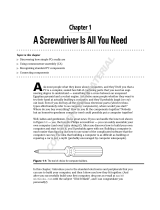
4
http://www.TYAN.com
Chapter 1: Introduction
2.12 Congratulations!
You’re now the owner of the most advanced dual AMD processor solution – Tiger MPX. Based on
the AMD 760MPX chipset, the Tiger MPX offers you all the latest features of a cutting-edge
platform along with the security of having the most reliable computing platform. Supporting Athlon
MP processors (and Athlon XP processors in single mode), the Tiger MPX opens a whole new
computing dimension. Whether operating in single mode or symmetrical processing mode, Tiger
MPX offers a plethora of expansion options previously unavailable.
Tiger MPX is an integrated motherboard with features such as dual channel UltraATA-100, and
optional 10/100Mbit Ethernet. Users who demand the most in speed and bandwidth will
appreciate the native support for 64-bit, 66MHz PCI slots as well as 32-bit, 33MHz PCI and 4X
AGP.
Offering features that supercede the competition, Tiger MPX enables connectivity right out of the
box. Using the optionally equipped 10/100Mbit Ethernet port, you’re able to get connected in no
time at all. Whether it’s to the Internet or a LAN, Tiger MPX has you covered in virtually all
directions.
The Tiger MPX supports up to 3GB of regular or Registered ECC PC2100/1600 DDR SDRAM.
Remember to visit TYAN’s Website at http://www.tyan.com. There you can find information on all
of TYAN’s products with FAQs, distributors list and BIOS setting explanations.
1.2 – Hardware Specifications
Processor
• Dual PGA462 ZIF sockets
• Supports up to two AMD Athlon MP
processors
• Supports single AMD Athlon (single only),
Athlon MP, Athlon XP (single only), and
Duron (single only) processors
• Two onboard VRMs
• Front-side bus support for 200/266MHz
Chipset
• AMD 760MPX Chipset
• AMD 762 System Controller
• AMD 768 Peripheral Bus Controller
• National 83627 Super I/O ASIC
Memory
• Four 2.5v 184-pin DIMM sockets
• Supports up to 3GB of Registered
PC2100/1600 DDR SDRAM
• Supports ECC (72-bit) memory
Expansion Slots
• 2 64-bit/66MHz (both 3.3v) PCI slots (v2.2
Spec)
• 4 32-bit/33MHz 5v PCI slots (v2.2 Spec)
• 1 4X AGP slot (also accepts 1X and 2X AGP
cards)
Integrated PCI IDE
• Dual-channel UItraATA-100
• Up to four E-IDE drives
• Support for PIO/DMA/ATAPI devices
Integrated I/O
• One floppy connector supports up to two
drives
• Two 9-pin 16550-based serial ports
• One 25-pin SPP/ECP/EPP parallel port
• Four USB v.1.1 ports (two via optional cable)
• PS/2 keyboard and mouse ports
• One RJ-45 LAN port with LEDs (optional)
Integrated LAN (Optional)
• 3COM 3C905C LAN controller
• 10/100Mbps max data rate per controller





















